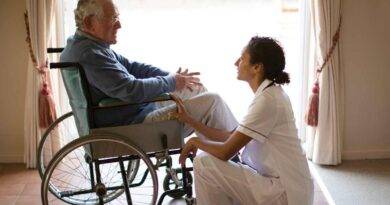Individualizing the Care of Older Adults – Not Too Late to Start, Yet
The older adult population in the U.S. is exploding. Starting in 2010, we will see 10,000 people turn 65, each and every day, for the next 20 years. With the growing incidence of mental and physical disorders in this age group, coupled with the shortage of professional and paraprofessional geriatric workers, and a shrinking labor pool, we soon could be facing a serious care giving crisis.
According to the Centers for Disease Control, 133 million people have one or more chronic medical conditions in the US, such as diabetes or hypertension. Furthermore, 80% of the $1.4 trillion price tag for treating these chronic conditions (direct and indirect costs) are for those individuals who are not institutionalized in hospitals and nursing homes. The remaining 20% of the cost goes for those treated in institutions.
Another alarming statistic is that more than half of all insured Americans are taking prescription medications for chronic health problems, mostly for high blood pressure and high cholesterol. Compounding these startlingly high incidence rates of chronic disease is that depression is co-morbid in, or co-exists in, 30% to 50% of these conditions. And, when depression is present, it complicates the patient’s management of the chronic disease.
Shortage of Geriatric Workforce
There is a severe shortage of trained health care professionals to meet the current demands of the older adult population, let alone the expected demands that come with the leading edge of the baby boom generation. The American Hospital Association reports that over 100,000 vacancies currently exist for nurses in the US. A study from the University of Pennsylvania reported that an additional 30,000 nurses will be needed annually to meet the expected needs, 30% more than are now graduating.
The geriatric physician numbers are also troubling: the Alliance for Aging Research reports that the number of geriatricians will need to increase fivefold, from 7,100 to 36,000 by 2030. But, only half of the open geriatric medicine slots in medical schools were filled in 2007.
The supply of direct care workers will also need to expand by 1 million from the current availability of 3 million, within five years. However, the labor pool where these workers are drawn from (i.e., women aged 25 to 54) is expected to not increase proportionately, but increase by less than 1%. This will put increasing burdens on the pool of over 44 million unpaid caregivers, namely, family members. The Family Caregiver Alliance reports that caregivers are present in 1 in every 5 households in the US, and over 80% of these caregivers are family members.
These are staggering figures. If these estimates prove to be even close to accurate, the demand for caregivers will clearly outpace the supply of trained personnel in the very near future, an event that could reach crisis proportions. Although there are many training and education initiatives underway to offset these workforce shortages, this paper proposes a different tack: individualize the care that older adults receive and foster a patient-driven model of care. In other words, decrease the demands on the health care system by individualizing care and mobilizing new resources, including the patient himself, in this new model.
What Does Individualized Care Look Like?
Individualizing care means a number of adjustments from the usual approaches in our health care system. First, expect the individual patient to assume more responsibility for his or her own physical and emotional well being, and to adopt more of a self-care mindset. What we will see when this occurs is more older adults saying, “I’m responsible for my health” and, we will see fewer people looking to their health care providers for all answers, all direction, and all fixes. The patient can then become engaged in problem solving, and is much more inclined to change health risk behavior patterns when he sees himself as part of the solution.
In order for this shift to greater self-care to take place, however, a second task is necessary, and this involves training caregivers on basic two-way communication with their patients. Unilateral communication, characterized by one-way direction and instruction, leaves patients feeling uninformed about their condition, and uninvolved in the management of their own condition.
One recent study published in the Annals of Emergency Medicine (July, 2008) reported that 78% of the patients discharged from emergency rooms did not understand either their diagnosis, their treatment, their at-home care, or the warning signs of when to return to the hospital. Communication improvements also will touch on the inter-disciplinary teamwork process, and the inherent need for all members of the team to have equal voices, and to assert themselves when important needs of the patient are being missed or minimized.
The “teach back” method hopes to address the health literacy barrier by asking patients to explain what they heard about their condition and treatment recommendations back to their provider to confirm that they have the right information. Trends in informed consent are toward making them more understandable, written at a 6th grade level, a process to test the patient’s comprehension, and explaining things until they are fully understood. Also, physicians’ practice of informing patients about their diagnosis still leaves much to be desired. An article in the Journal of the American Geriatrics Society in March, 2008, reported that about half of the MD’s studied were not telling patients their diagnoses. Unfortunately, the desire to protect the patients from the realities of their condition also deprives them of the opportunity to make informed decisions about what to do next.
Understanding Patients’ Uniqueness
The third approach to individualized care is to understand older patients’ uniqueness, and what traits they bring to the care giving equation. These include their values, their attitudes about health care and health care providers, and the cultural sensitivities that impact their care. Though most people acknowledge that there will be increases in the older adult population, less well known is the fact that these increases will come primarily in ethnic minority groups, including African-American, American Indian, Asians, and Hispanics, two to four times faster than in Caucasians. This puts a premium on greater cultural awareness and competence for all health care providers.
Resistance to Care
The fourth necessary adjustment for more individualized care is to better understand non-compliant patients, the reasons for this non-compliance, and approaches to overcoming this non-compliance. Reasons for patient resistance range from emotional and personality factors, like fear, distrust, limited coping ability, and limited control over one’s environment to misunderstanding, misinterpretation, and limited cognitive ability.
Overcoming this resistance to treatment is one of the central ingredients in individualized patient care. Demonstrating understanding and empathy about what he or she is facing are essential steps, but even more important is an acceptance of the patient’s views, whether we agree or not. Without this understanding and acceptance, the desire to comply with the treatment plan or to change health risk behaviors never becomes internally-directed, and externally-directed behavior tends to be temporary.
Lastly, understanding non-compliance means considering the patient’s belief and confidence in the ability to change. This is referred to as self-efficacy, and is a pretty good measure of how much he is on board with greater self-care.
Conclusion
Taken together, these four approaches to individualizing the care with older adult patients can greatly affect the individual, and greatly impact the health care system. By mobilizing the patient’s interest in his own treatment, better informing him of what his condition is all about, and understanding his unique approaches and resistances to treatment, we gain another, very important ally in the geriatric workforce, the patient himself.



